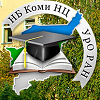Estimation of Source Parameters of Gravitational Anomaly by Particle Swarm Optimization
Abstract
Full Text:
PDF (Русский)References
Eberhart R., Kennedy J. 1995. Particle swarm optimization. In: Proceedings of the IEEE International Conference on Neural Networks, 4, IEEE, pp. 1942–1948. doi: 10.1109/ICNN.1995.488968.
Elhussein M., Abo-Ezz E.R., Gomaa O.A. et al. 2023. Two-sided fault parameter assessment through the utilization of a particle swarm optimizer to different gravity horizontal gradients-orders with application to various cases studies. Environ Earth Sci 82:502. doi: 10.1007/s12665-023-11081-0
Loni S., Mehramuz M. 2022. Comparison of improved particle swarm optimization with Marquardt Algorithm for simulation of sedimentary basin with parabolic density contrast using gravity data. J. Ind. Geophys. Union. 26(1):1–15. doi: 10.1186/2193-1801-2-462
Balk P.I., Dolgal A.S. 2020. Additivnye tekhnologii resheniya obratnykh zadach gravirazvedki i magnitorazvedki. [Additive methods for solving inverse problems of gravity and magnetic prospecting]. Moskva, Nauchnyy mir. p. 455 (in Russian).
Gavrilova T.A., Khoroshevskiy V.F. 2000. Bazy znaniy intellektualnykh sistem [Intelligent systems knowledge bases]. St. Petersburg, Piter, p. 384 (in Russian).
Dolgal A.S., Petrosyan R.N. 2021. Resheniye obratnoy zadachi gravirazvedki dlya 2D prizmaticheskikh tel metodom statisticheskikh ispytaniy [Solution of the inverse problem of gravity exploration for 2D prismatic bodies by the statistical tests method]. Vestnik Permskogo universiteta. Geologiya. 20(4):334-343 (in Russian). doi:10.17072/psu.geol.20.4.334
Dolgal A.S. 2018. Elementy iskusstvennogo intellekta v montazhnom metode interpretatsii gravitatsionnykh anomaliy [Elements of artificial intelligence in the installation method for interpreting gravitational anomalies]. In: Strategiya i protsessy osvoyeniya georesursov. Perm, p. 146–149 (in Russian) doi: 10.7242/gdsp.2018.16.38
Dolgal A.S. 2023. Lokalizatsiya istochnika anomalii sily tyazhesti metodom roya chastits [Localization of the source of gravity anomalies by the particle swarm method]. In: Teoriya i praktika razvedochnoy i promyslovoy geofiziki. Perm, Perm State University, p. 98–104 (in Russian).
Kazakova Ye.M. 2022. Kratkiy obzor metodov optimizatsii na osnove roya chastits [Short overview of particle swarm optimization methods]. Vestnik
KRAUNTS. Fiziko-matematicheskiye nauki. 39(2):150–174 (in Russian). doi: 10.26117/2079-6641-2022-39-2-150-174
Kalinin D.F. 2011. Informatsionno-statisticheskiy prognoz poleznykh iskopayemykh [Information and statistical forecast of mineral resources]. St. Petersburg, Geologorazvedka, p. 163 (in Russian).
Nikitin A.A., Petrov A.V. 2008. Teoreticheskiye osnovy obrabotki geofizicheskoy informatsii [Theoretical foundations of geophysical information processing] Moskva, VNIIgeosistem, p. 116 (in Russian).
Simon Dan. 2013. Evolutionary Optimization Algorithms. John Wiley & Sons. p. 784.
Smolin A.V. 2007. Vvedeniye v iskusstvennyy intellect [Introduction to artificial intelligence]. Moskva, FIZMATLIT, p. 264 (in Russian).
Strakhov V.N. 1988. Chto delat? (o razvitii gravimetrii i magnitometrii v Rossii v nachale 21 veka) [What to do? (on the development of gravimetry and magnetometry in Russia at the beginning of the 21st
century)]. Moskva, IEP RAS. p. 24. (in Russian)
DOI: http://dx.doi.org/10.17072/psu.geol.23.1.85
Refbacks
- There are currently no refbacks.















